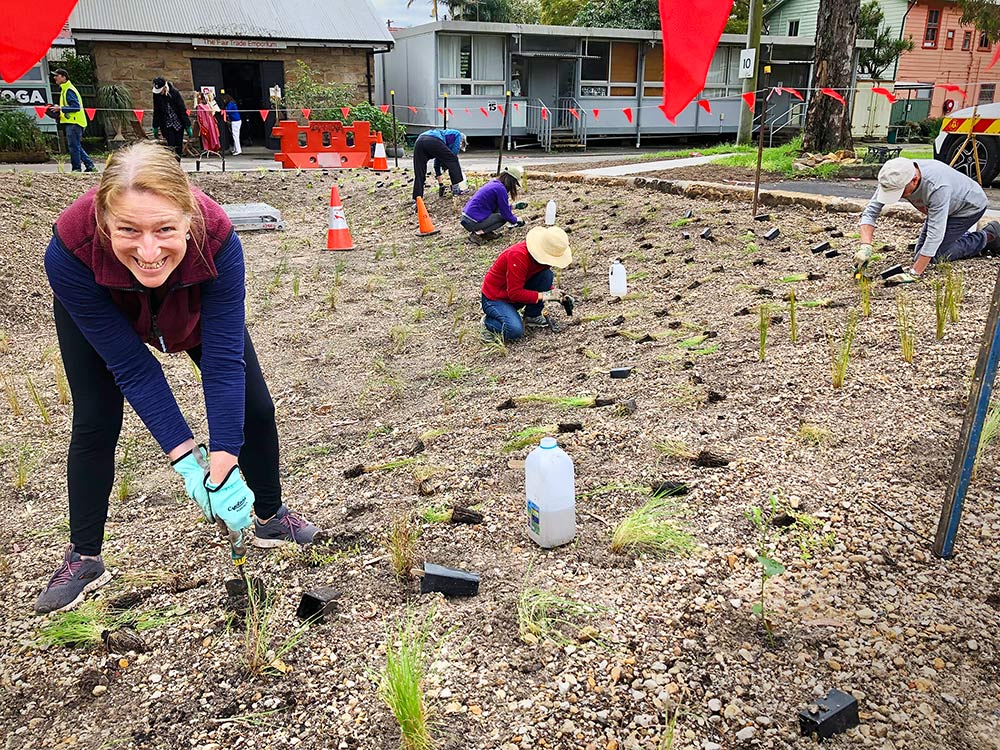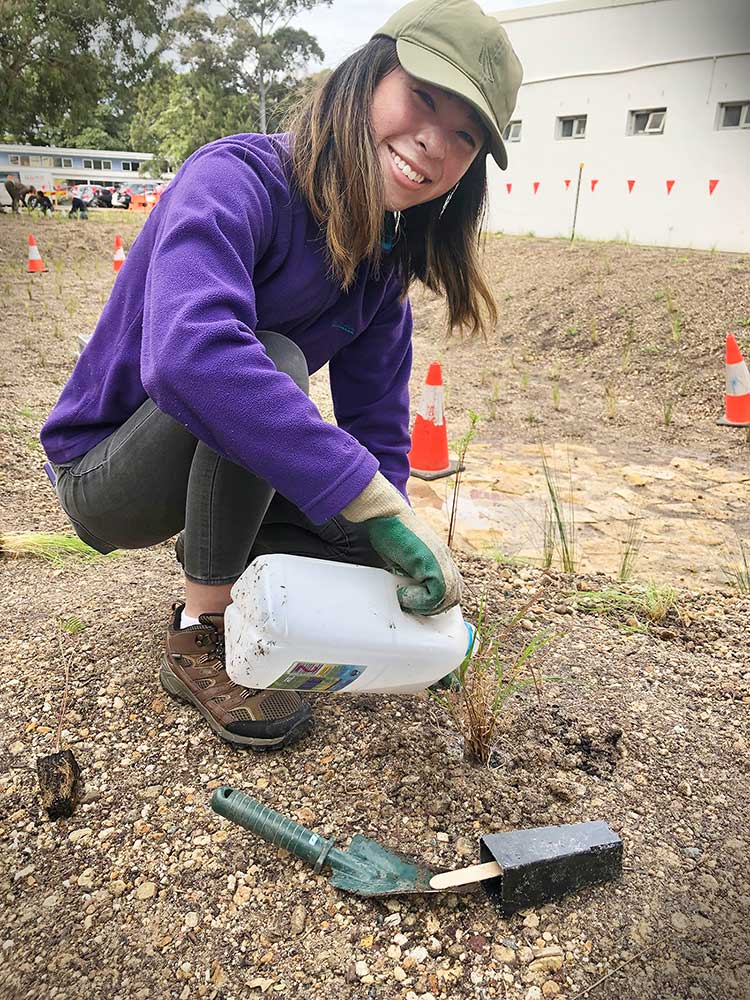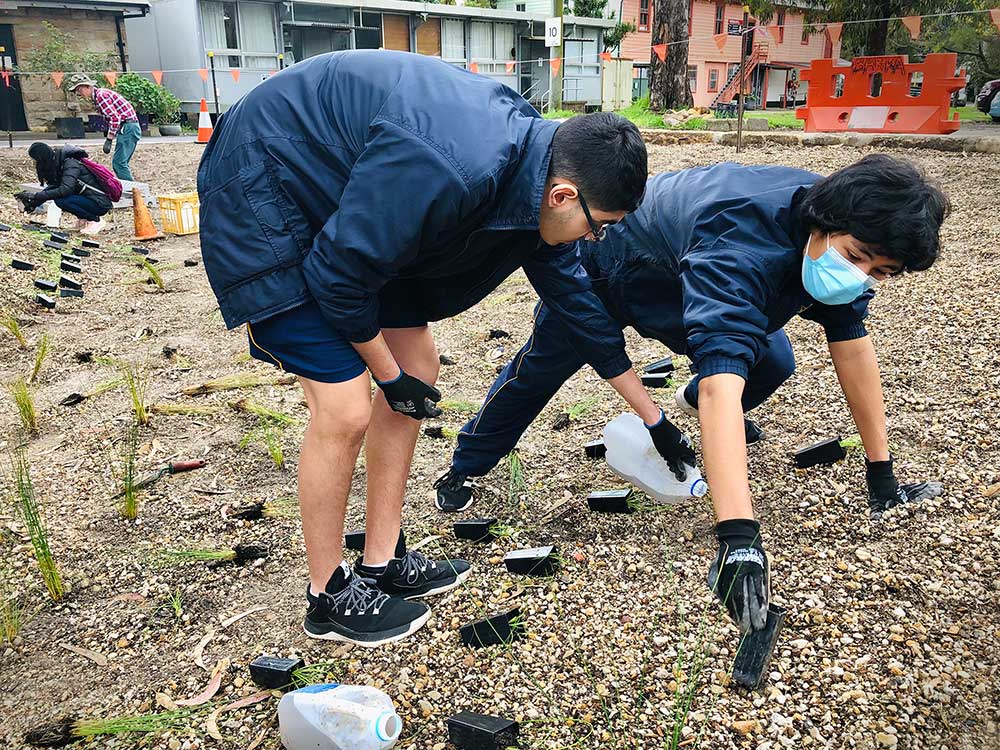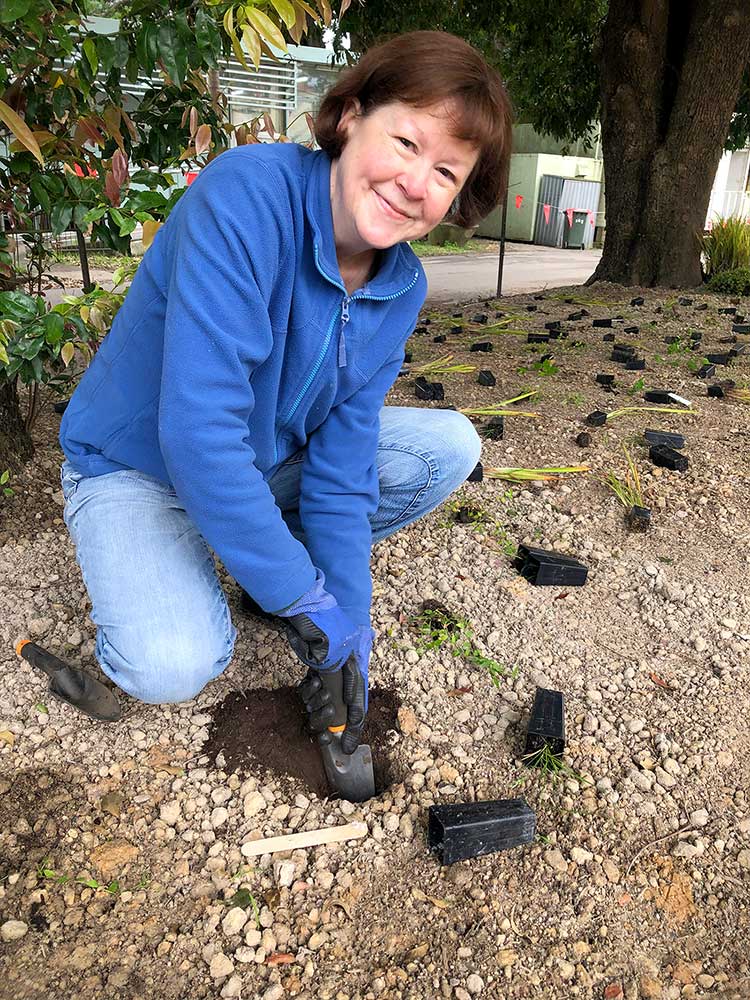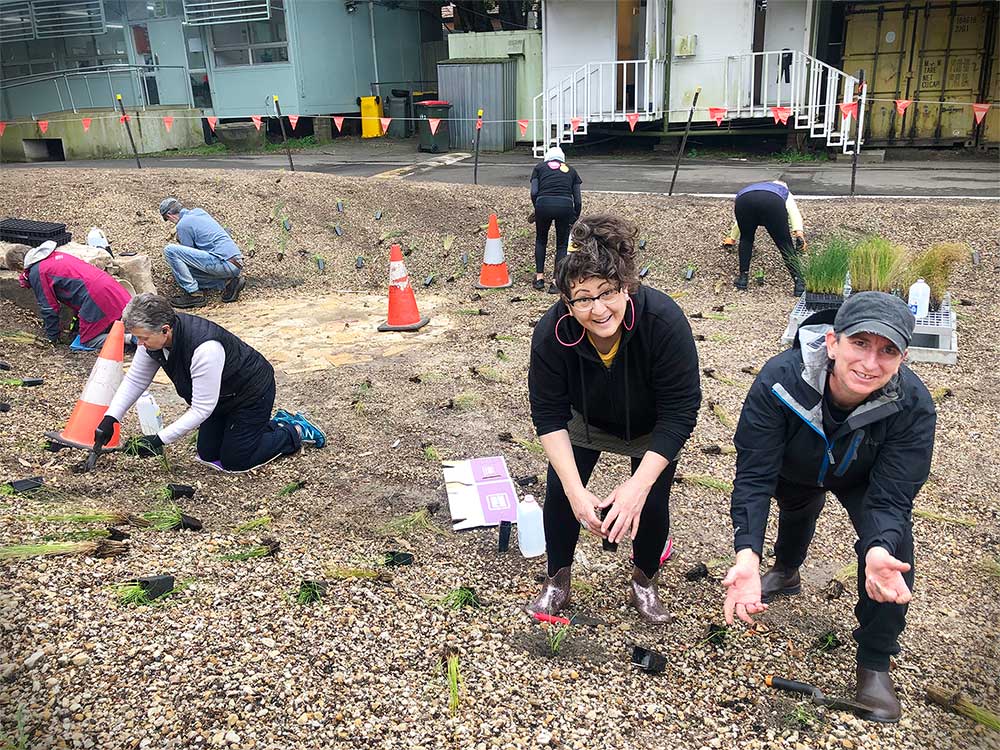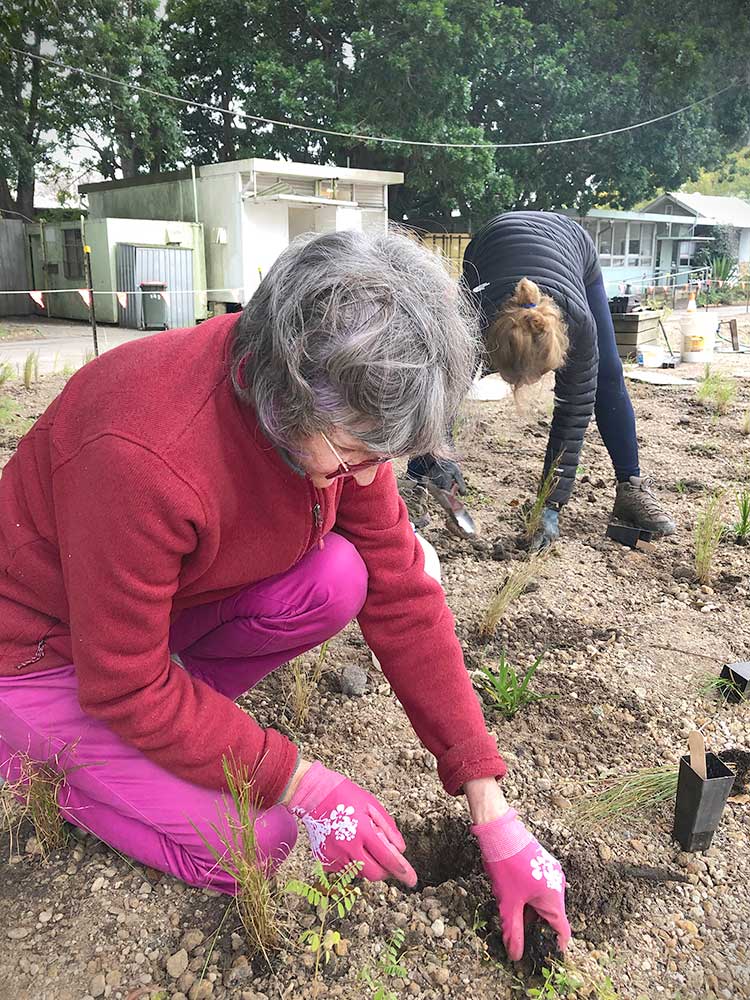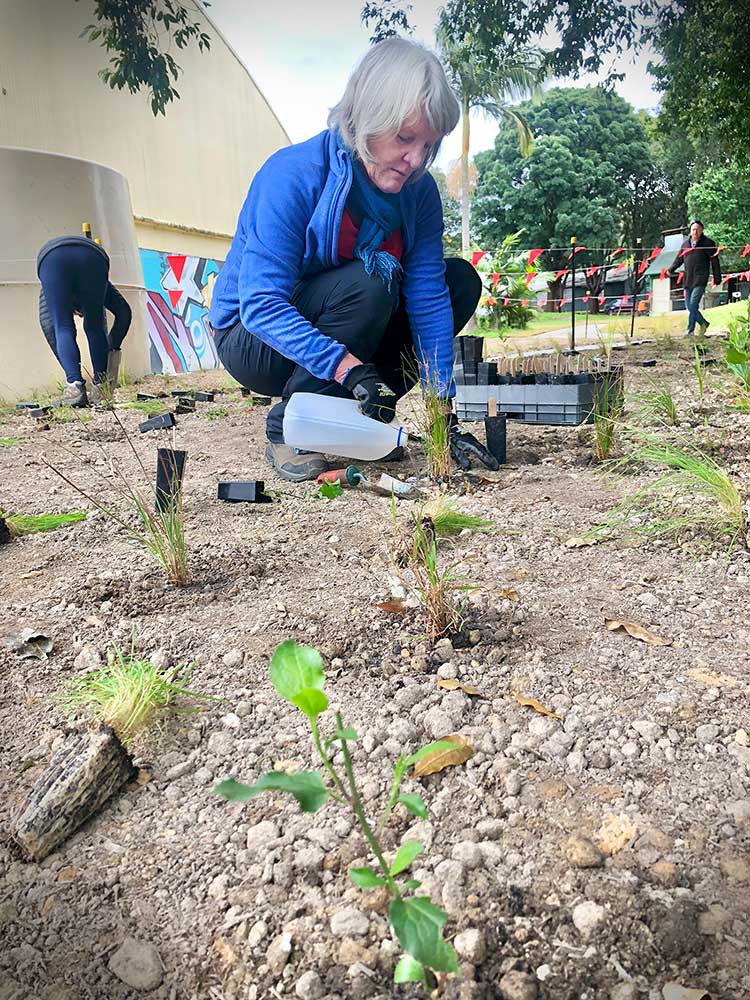What a turn out for our rain garden planting! A hive of planting activity, all ages and skill levels, from “I’ve never planted a thing in my life!” to seasoned bush regenerators, came together over a day and half to plant 3,600 native plants in August in our beautiful new rain garden at Addi Road.
The rain garden next to our Gumbramorra Hall, created in partnership with Inner West Council, is designed to improve the health of the Cooks River. Local stormwater is diverted (from the area west of Addi Road) into three chain-of-ponds planted with 14 species of native grasses, sedges and flowering plants which filter the water before it returns to the main stormwater channel.
Planting special Leonie McNamara introduces Marrickvile High School Support Unit students to how the plants work in the rain garden
Connection with community, natural history and nature
The new rain garden, also called a bio retention system, re-interprets the old creek line that once flowed through to the Gumbramorra Swamp in pre-colonial days. Each planting session began with Inner West Council’s planting expert presenting how the rain garden and the native plants have been chosen.
Three of the native species planted: Knotted Club Rush (Ficinia nodosa), Australian Indigo (Indigofera Australis), Tall Sedge, Southern Lofty (Carex appressa).
14 species of grasses, sedges and flowering plants were planted to:
- Filter out heavy metals, excess nutrients and plastics, including micro plastics
- Connect to the natural history and reinstate the native species of the area
- Attract and provide habitat for native birds and animals
Planting specialist, Leonie McNamara, from Inner West Council, introduces planting volunteers to how our new rain garden works and how it turns stormwater into a valuable resource.
The rain garden is one of many Addi Road sustainability programs.


